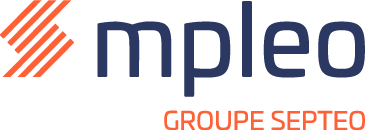
How to sep up a GEPP Strategy?
The Gestion des Emplois et des Parcours Professionnels (GEPP), or Jobs and Career Path Management, is a strategic approach to skills management introduced by the Macron ordinances in 2017. By introducing the concept of career pathways, GEPP goes beyond the previous Gestion Prévisionnelle de l’Emploi et des Compétences (GPEC), or strategic workforce planning. Its main ambition is to align business objectives with employees’ individual expectations, while anticipating labour market trends.
This article explores what GEPP is, how it differs from GPEC, its benefits, and the three essential steps – along with the tools – needed to know how to set up a GEPP strategy.
What is GEPP?
GEPP is a proactive approach to skills management that integrates the development of employees’ career paths. This comprehensive method aims to respond to the economic, technological, social, and environmental shifts impacting organisations and their people. In practice, GEPP involves forecasting market trends, assessing existing skills, and developing plans to bridge the gaps, while promoting internal mobility and career growth.
GEPP in the French Labour Code
GEPP is governed by Article L.2341-1 of the French Labour Code, which makes its implementation mandatory for certain companies. This includes businesses with over 300 employees and European-scale groups with at least one site employing more than 150 people in France.

Additionally, Article L.2242-20 requires it to be reviewed every three years, with the possibility of extending to four years under specific company agreements.
Employers must therefore demonstrate their commitment to workforce stability and employment retention. Failure to comply may result in sanctions.
Key differences between GEPP and GPEC
Both GPEC and GEPP aim to align an organisation’s human resources with its strategic needs. However, GEPP introduces an extra dimension by focusing on dynamic career path management and supporting employees throughout their development.
Whereas GPEC largely centres on internal organisational structures, GEPP also considers long-term employability and personal progression of employees.
What are the benefits of GEPP?
Implementing a GEPP has tangible benefits for the whole organisation.
GEPP for companies: A forward-thinking tool for employers
GEPP allows companies to anticipate future challenges by analysing market trends and adjusting their skill development strategies accordingly. This foresight supports long-term planning and informed decision-making, especially during uncertain periods. GEPP also enhances the company’s image as an employer by promoting a work culture that values growth and opportunity – key to attracting and retaining talent.

GEPP for employees: a career booster
For employees, GEPP provides a clear view of their future within the organisation. It creates access to training and development opportunities aligned with both current market demands and their personal career goals. By promoting personalised career management, GEPP adds meaning to employee journeys and empowers them to take ownership of their growth – whether within the company or through external support for career changes or entrepreneurial ventures.
3 key steps to successfully set up a GEPP strategy
Let’s look at how to set up a GEPP strategy through three core steps.
Step 1: Analyse Market Trends and Shifts
Every GEPP approach begins with a contextual analysis of the organisation’s environment. Anticipating technological, environmental, economic, and social changes – both internally and externally – helps identify emerging skills and roles, as well as those likely to decline.
Foresight Tools for GEPP
To envision uncertain futures and build short-, medium-, and long-term scenarios, companies may rely on consulting firms. However, some HR software solutions can also be powerful allies. The right forecasting tools help list and prioritise issues, providing clear, visual insights to leadership – making the communication of potential scenarios, their likelihood, and impact more effective.
Step 2: Conduct an in-depth internal skills audit
The second step involves mapping current employee skills, identifying gaps, and understanding individual aspirations. Employees naturally play a key role in this stage. HR teams should invite them to express their needs, professional ambitions, and career goals.
Tools to simplify your skills audit
To get a complete picture of the company’s human capital, it may be helpful to use a Human Capital Management (HCM) system. At this stage, one key challenge is centralising data from various sources (employee interviews, past training sessions, previous annual reviews, etc.). This data must then be analysed and interpreted – a task for which HCM tools are especially useful.

Step 3: Build a skills development plan
To bring a GEPP strategy to life, the company must create a career path management plan. This can involve several levers: professional training, internal mobility, recruitment, or support for entrepreneurial and career transition projects.
GEPP doesn’t impose a rigid framework – its only limit is the creativity of stakeholders. The key safeguard is ensuring that all initiatives align with business goals and are regularly adjusted based on results and employee feedback.
Tools to strengthen your career path strategy
At this stage, organisations should prioritise tools dedicated to human capital management, such as HCM or HRIS systems. These solutions help measure the impact of implemented actions. The various components of the career path plan can then be monitored in real time by HR teams, based on collected data.
In Summary
Jobs and Career Path Management (GEPP) is a key strategic tool for companies looking to adapt to fast-evolving markets while fostering employee development. By focusing on anticipating future needs and supporting career progression, GEPP creates a positive dynamic that benefits both organisations and their people. With the right tools and a collaborative mindset, implementing a GEPP strategy can become a cornerstone of HR planning – enhancing agility in the face of tomorrow’s challenges.

